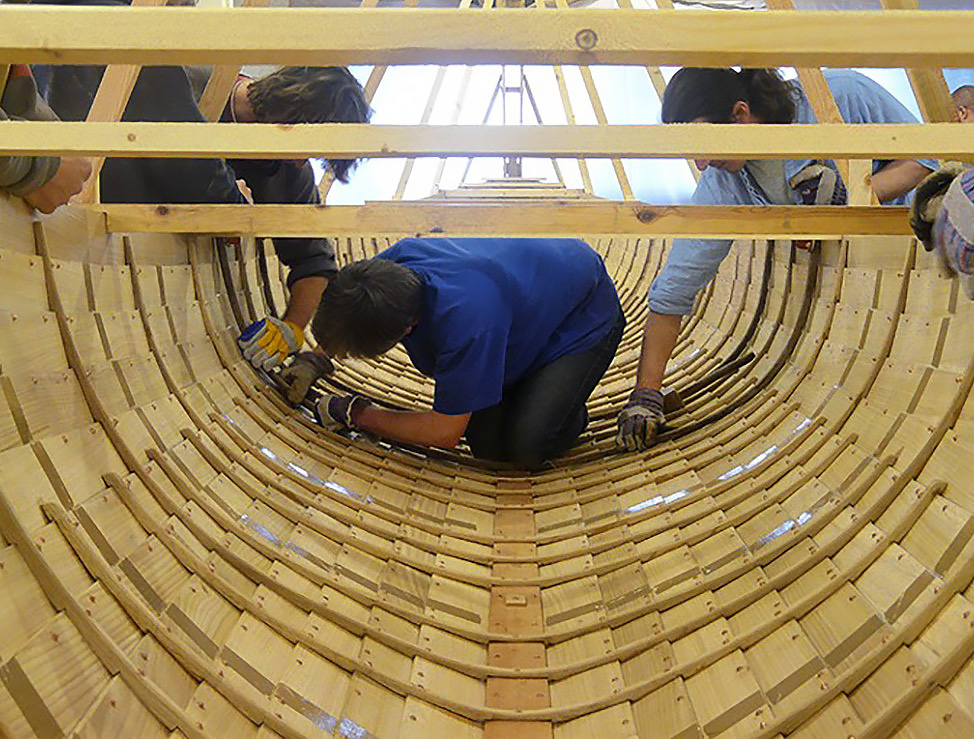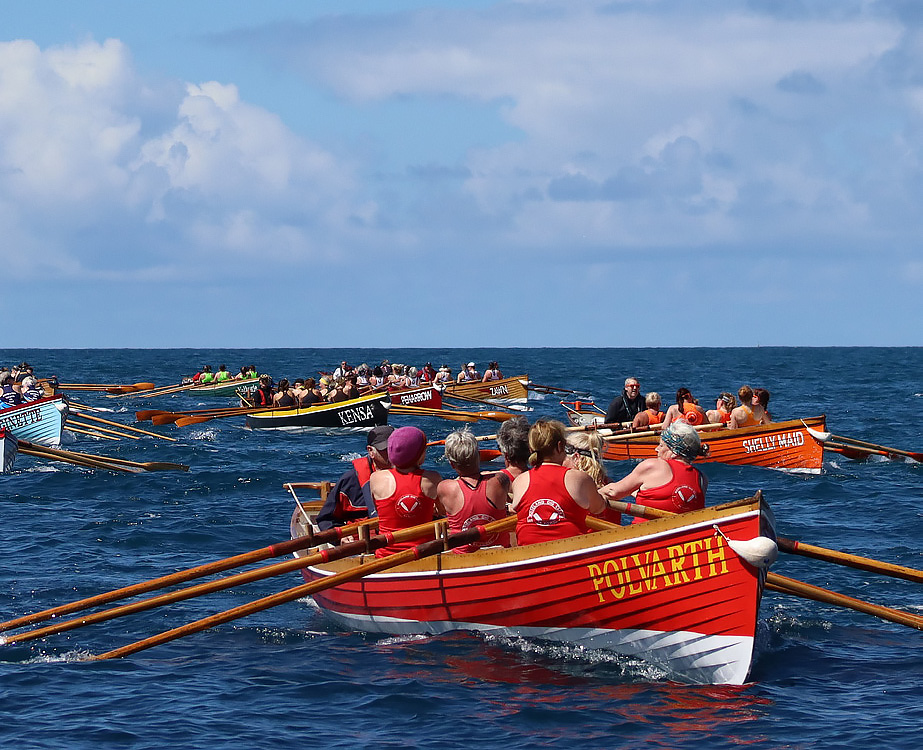Nick George

Elm planking and oak ribs held together by copper rivets and roves. Image: Jade Colton

Some of the gigs after their races in the World Pilot Gig Championships in the isles of Scilly. Image: Jade Colton

Oak stem with ‘grown’ turn. Image: Jade Colton
The Cornish pilot gig, a 32-foot-long, clinker-built rowing boat, holds a storied legacy dating back to the early 1800s.
With approximately 250 of these wooden racing boats spread across 100 clubs, the sport of Cornish pilot gig racing is steadily growing and not just in the UK but also as far afield as Maine in the United States, Bermuda, and even on a racing circuit in the Netherlands.
Craftmanship
At the heart of the Cornish pilot gig’s enduring appeal is its meticulous craftsmanship. Traditionally constructed from elm and oak, these boats embody a rich heritage of boatbuilding that demands both skill and precision. Elm planking was traditionally used as it was strong, less prone to split or rot, making it ideal for the hull. Oak, known for its durability and sturdiness, is often used for the keel, stem and ribs, ensuring that the gig can withstand the rigorous demands of competitive rowing.
A growing sport
The sport of Cornish pilot gig rowing is more than a nod to maritime history; it is a vibrant, growing community that brings together generations. Children race alongside their parents and, in some cases, their grandparents, fostering a spirit of inclusivity and tradition. This fiercely competitive sport is showcased against some of the UK’s most breathtaking scenery, adding a picturesque backdrop to the exhilarating races.
One of the most anticipated events in the pilot gig calendar is the annual World Pilot Gig Championships held in the Isles of Scilly. Here, a multicoloured fleet of around 120 gigs compete in a spectacular display of skill and stamina, attracting participants and spectators from around the world.
Preserving tradition amidst growth
As the sport expands, the demand for new gigs grows, underscoring the need for quality materials like elm and oak. However, these woods are becoming increasingly rare, posing a challenge for gig builders who strive to maintain the traditional methods. The use of elm and oak is not just about preserving the authenticity of the boats but also about ensuring they meet the rigorous standards required for competitive racing.
The future of Cornish pilot gig racing looks bright, with interest surging globally. Oak stem with ‘grown’ turn. Efforts aim to keep the tradition alive while adapting to modern environmental concerns. The Cornish pilot gig is more than just a boat; it is a symbol of a rich maritime tradition that continues to thrive. As the sport grows and evolves, the need for elm and oak remains a testament to the enduring craftsmanship and heritage that define these magnificent boats.
A call for help
To support the continued growth and tradition of Cornish pilot gig racing, there is an urgent need for suitable timber. If you have to fell an English or narrow-leafed elm tree, or if you possess crooks, bends, or turns of oak that would be suitable for gig construction, please consider contributing to this timeless craft. By providing the necessary materials, you can help turn this timber into a gig that future generations will enjoy.
For more information or to discuss how your timber can be transformed into a Cornish pilot gig, please email hello@cpga.co.uk.
This article was taken from Issue 206 Autumn 2024 of the ARB Magazine, which is available to view free to members by simply logging in to the website and viewing your profile area.